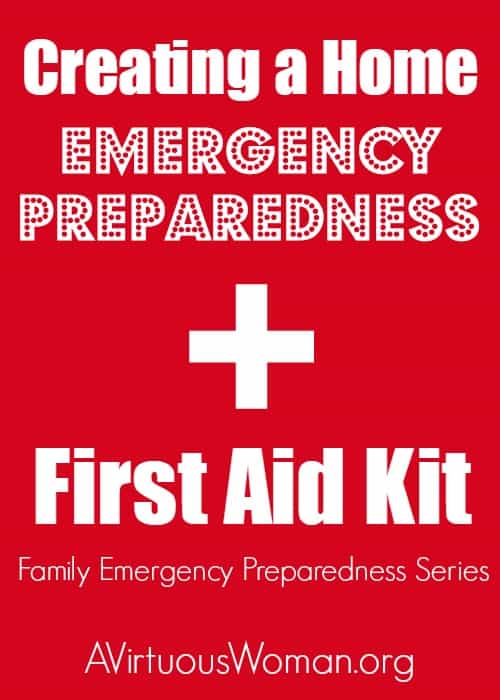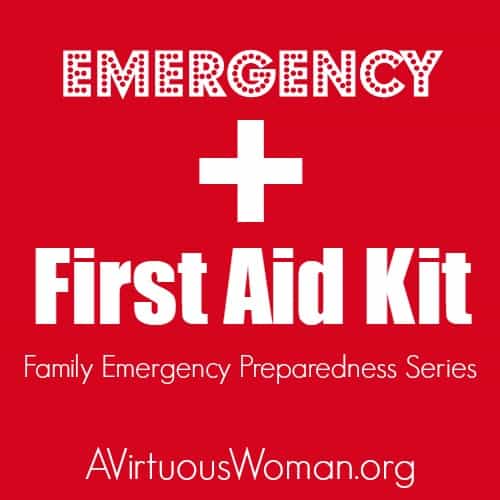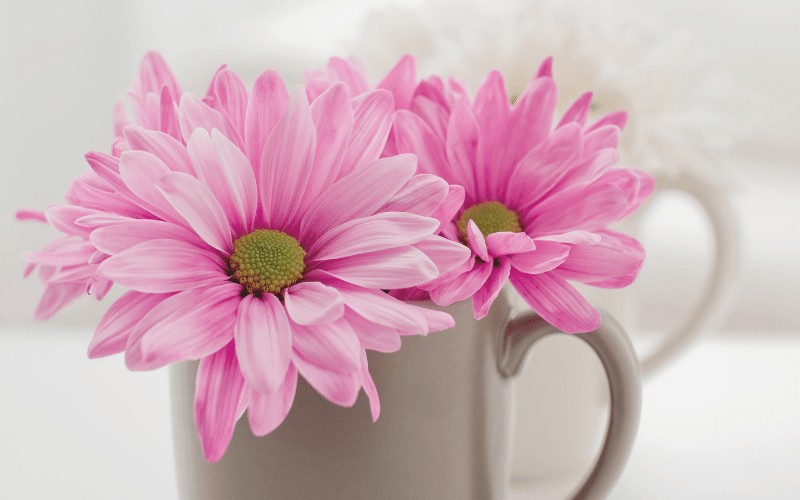What You Need in a First Aid Kit

Family Emergency Preparedness
You can read all of the posts in the Family Emergency Preparedness series here.
We all hope that we’ll never be faced with a major disaster or emergency. Even more than that, we all hope that we’ll never be faced with an emergency situation where we need to use a first aid kit. But, it’s important to be prepared for any situation that could possibly happen.
It’s easy to be overwhelmed when trying to figure out what to stock up on. Even as I write these lists, I think of all that I have not prepared – and how can I possibly afford to purchase all of these things? However, by setting priorities and working toward a goal you can begin to gather your supplies.
[Tweet “How to Create a Home Emergency First Aid Kit: “]
What You Need in a First Aid Kit
We’ll be looking at different types of first aid kits. The everyday first aid kit is the one you go to when your child skins his knee or your husband cuts his finger on a kitchen knife. And then there is the really Detailed Emergency First Aid kit you want to have in your Home Emergency Closet. If you are serious about preparing for a possible long term crisis, you’ll want to stock up on items for your Detailed Emergency First Aid Kit. I also included a small first aid kit in each of our 72 Hour Grab and Go Kits.
[Tweet “What to Stock in the Family Emergency Preparedness First Aid Kit:”]
The Everyday Basic First Aid Kit
I have a red pouch for our Everyday Basic First Aid Kit that I keep in a cabinet where we keep our medications. It’s important to keep your first aid kit filled – so as you use items from the kit, be sure to replace them so when an accident happens you are prepared.
- Band-Aids in various sizes
- medical tape
- antibiotic ointment
- anti-itch cream
- butterfly bandages
- alcohol wipes
- gauze
- Ace Bandage
- non-latex exam gloves
- tweezers
- bee sting kit
- calamine lotion
- hydrogen peroxide
- q-tips
- cotton swabs
- aspirin
- chewable aspirin
- ibuprophen
- acetaminophen
- thermometer
- scissors
- eye dropper
- medicine cup
- hand sanitizer
- instant cold pack
The Emergency First Aid Kit
You can purchase ready-made First Aid Kits – try Amazon.com or Sam’s Club. But most ready-made first aid kits will not contain everything you will want to keep in your Home Emergency Closet. There is a difference between clean and sterile. Sterile gloves and sterile Kerlix are just that – sterile. If you don’t know how to keep sterile gloves sterile, you might want to watch a video on how to get them on your hands without contaminating them. Exam gloves are simply clean and provide a barrier between your hands and whatever you are working on.
The Emergency First Aid Kit has everything above PLUS these items:
- sterile gloves
- sterile Kerlix
- Betadine
- N-95 Face Masks
- respirator
- tourniquet
- glucose tabs for low blood sugar
- blood pressure cuff
- stethoscope
- muscle rub
- splint
- sling
- iodine
- instant heat pack
- medical reference book/ first aid reference manual
- white sheets, blankets, and towels for hydra therapy
- dishpans – can be used for hydrotherapy, bathing sick persons, or vomit
Medicines and Medicinal Herbs to Stock
When stocking medications, it’s important to keep on top of expiration dates, although, just because a medication says it has expired, {aside from a few exceptions} the truth is, you can still take it. It’s also important to store medications in a cool, dry, and dark location. If you have young children who cannot swallow pills, be sure to stock both liquid and tablets.
Medicines & Vitamins
- presectiption medicications
- acetamenophin
- ibuprophen
- aspirin
- chewable aspirin
- antidiarrheal medicine
- Pepto-Bismal
- antacids
- laxatives
- cough syrup
- cold medicine
- cough drops
- Vitamin D
- Multi Vitamins for adults and children
Medicinal Herbs
We use herbs for healing and preventative medicine in our home. I like to make my own tinctures and ointments. I’ll talk more about this in detail in a future article.
- cayenne tincture
- ginger
- Super Tonic
- Digestive Tonic
- garlic
- Echinachea
- Golden Seal
- Milk Thistle
- Lobelia
- Activated Charcoal
- Collodial Silver
Note: I know you may have heard bad things about Collodial Silver. You NEED to be careful when using it. Don’t take it everyday, and take it in small doses. You don’t want to turn blue. Collodial Silver is anti-fungal and anti-bacterial. I have had dogs and horses who were very sick and after using this stuff were healed. It’s amazing how well it works. You can read more about how to use Collodial Silver here.
My animals are part of our family! A few years ago, my dog Lucy caught a huge rat right in the middle of the day. The rat was acting weird and kind of sluggish. I don’t know what was wrong with it. But Lucy got bit on the nose and it drew blood. Two weeks later Lucy was acting unusual and began foaming at the mouth. Of course, I’ll never know for sure – since the only way to test for rabies is by examining the brain, but I was worried she had gotten the disease. We quarantined her in cage, and three times a day I gave her a little milk with 1 tbsp. of collodial silver in it. I had read online where collodial silver was effective against rabies. Within a week she was acting normal. Another time, Lucy came down with a terrible respiratory illness and I used the collodial silver on her and she got better. Then there was the time I gave it to my horse… Of course, this is simply my own experience and I can’t confirm for sure that Lucy is still alive today because of the collodial silver, but I believe it!
Disclaimer: I am not a medical professional, any advice given here is for information purposes only and is based on my own opinions.








One Comment